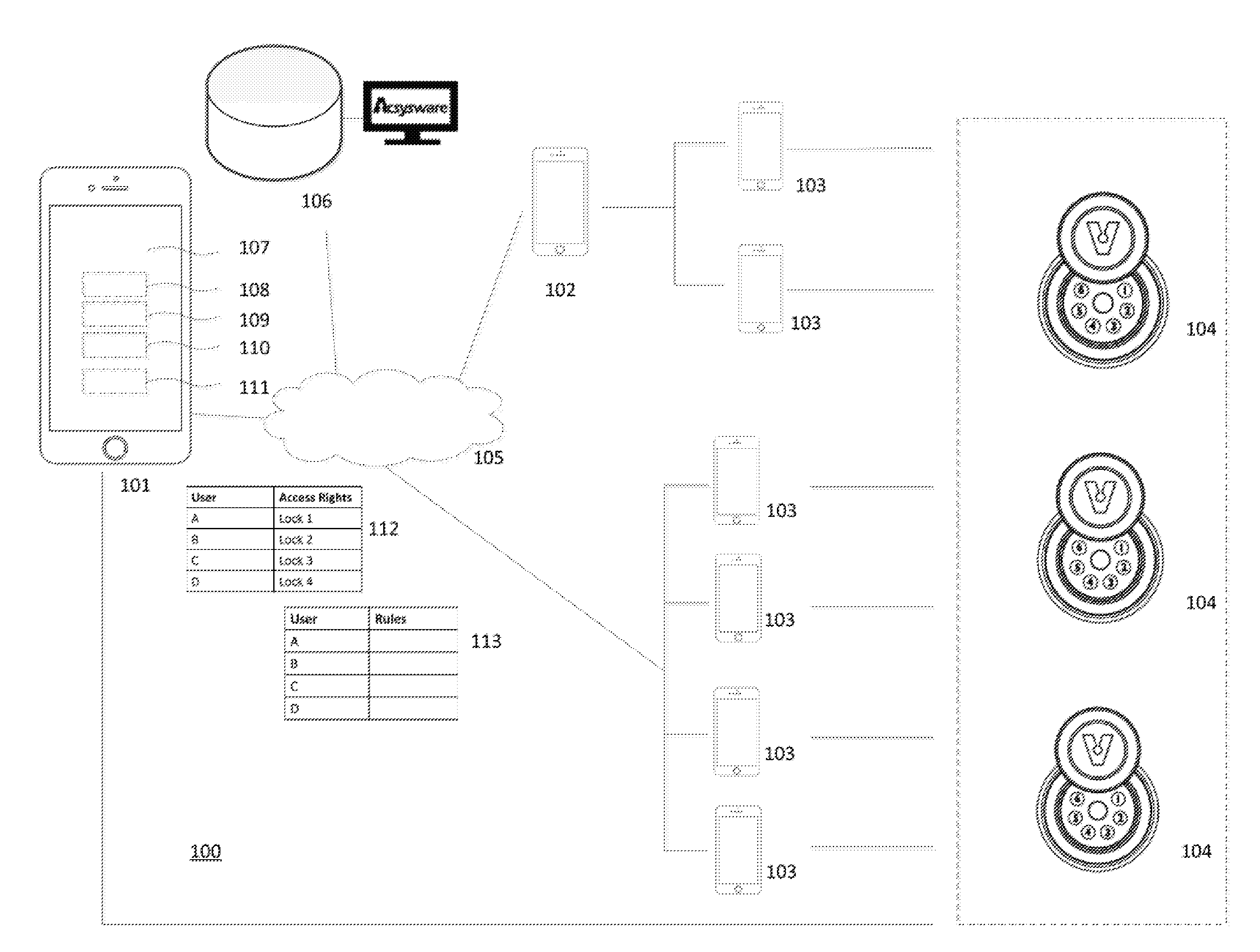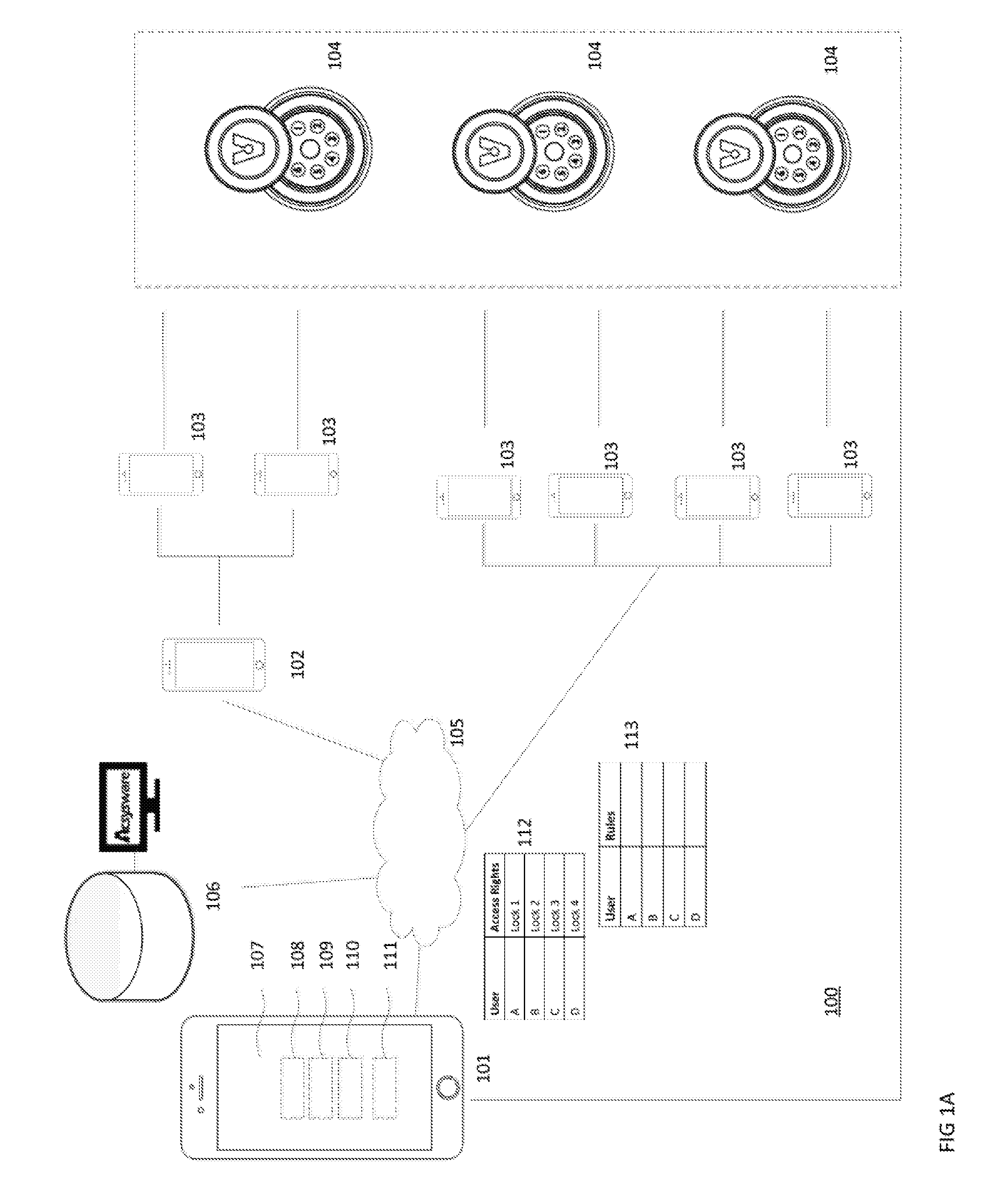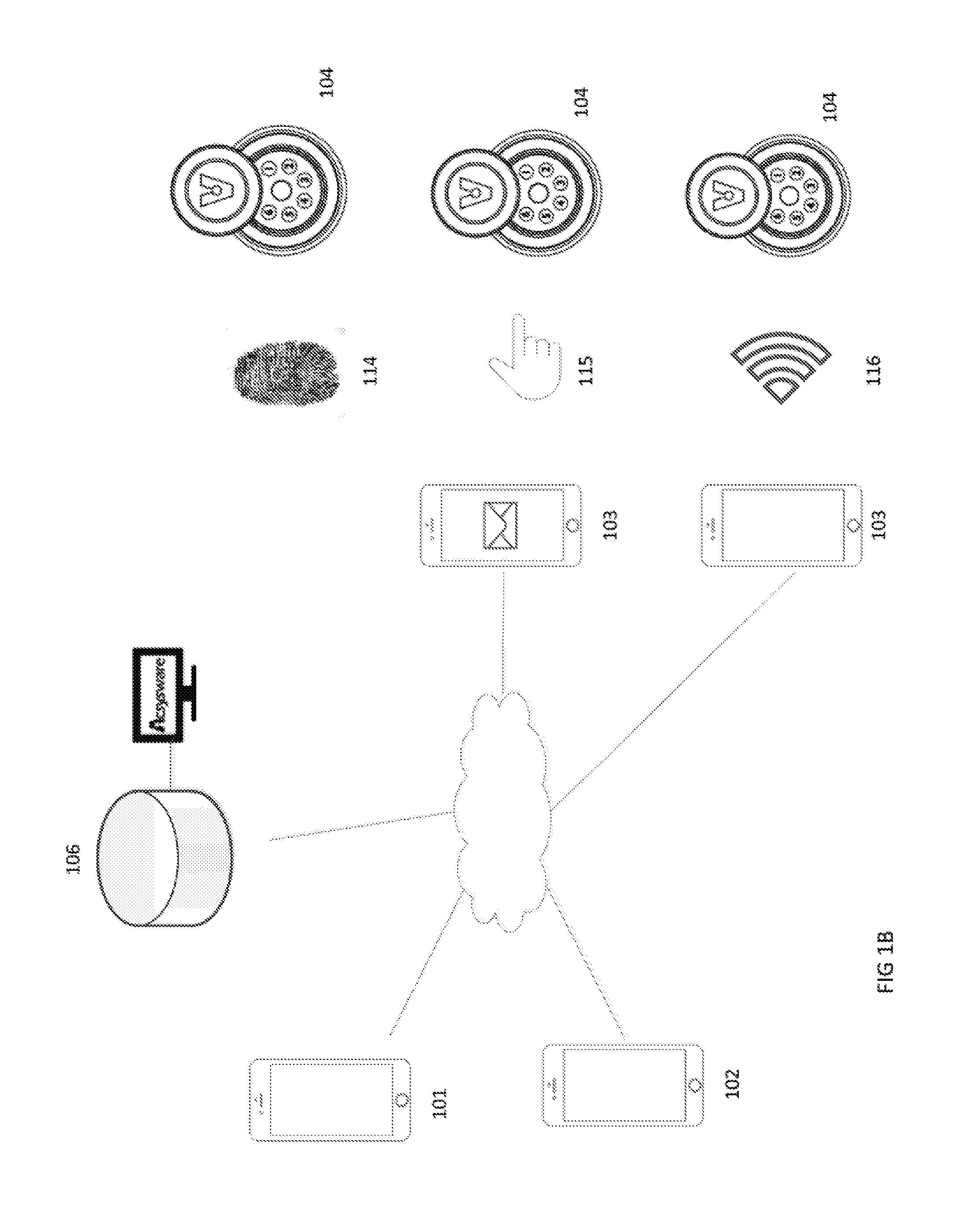Systems and methods for redundant access control systems based on mobile devices
a mobile device and access control technology, applied in the field of mobile devices, can solve the problems of inability to provide near real-time information about how or when the keys were used, mechanical locks and keys that use mechanical or mechatronic keys and locks continue to suffer from several drawbacks, and mechanical locks and keys do not offer robust protection against theft, loss, unlawful entry, or unwanted copying
- Summary
- Abstract
- Description
- Claims
- Application Information
AI Technical Summary
Benefits of technology
Problems solved by technology
Method used
Image
Examples
Embodiment Construction
[0026]Embodiments of the present invention include systems, methods, and apparatuses that enable users to open locks using redundant access channels, and allows masters or administrators to control a user's access in near real-time.
[0027]An exemplary access control system that provides redundant channels of access to users while communicating usage information in near real-time is shown in FIGS. 1A and 1B. The system includes one or more smart locks 104, a central access server 105, and devices 101, 102, and 103 for accessing and controlling the smart locks. Users open the smart locks 104 through one or more access channels as described in more detail below. Masters and administrators control how the users access the smart locks 104 from a master device 101 or administrator device 102. Users may communicate with masters, administrators, and open smart locks from a user device 103. Users may also open smart locks manually, without any need for a user device 103. A central access serv...
PUM
 Login to View More
Login to View More Abstract
Description
Claims
Application Information
 Login to View More
Login to View More - R&D
- Intellectual Property
- Life Sciences
- Materials
- Tech Scout
- Unparalleled Data Quality
- Higher Quality Content
- 60% Fewer Hallucinations
Browse by: Latest US Patents, China's latest patents, Technical Efficacy Thesaurus, Application Domain, Technology Topic, Popular Technical Reports.
© 2025 PatSnap. All rights reserved.Legal|Privacy policy|Modern Slavery Act Transparency Statement|Sitemap|About US| Contact US: help@patsnap.com



